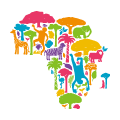 2-1. Forest data monitoring
2-1. Forest data monitoring 7. Establishing a Forest Reference Emission Level for Policymakers
1. Approach’s Outline and Features This approach aims to propose a quantitative evaluation methodology of the applicability of the Emission Reduction Scenario (ERS) and introduce how to design a Forest Reference Emission Level (FREL), focusing on the agricultural sector as the main driver of deforestation for policymakers. A landscape approach is used to develop a FREL, which is a concept for achieving social, economic and environmental goals on land where productive uses such as agriculture com...
